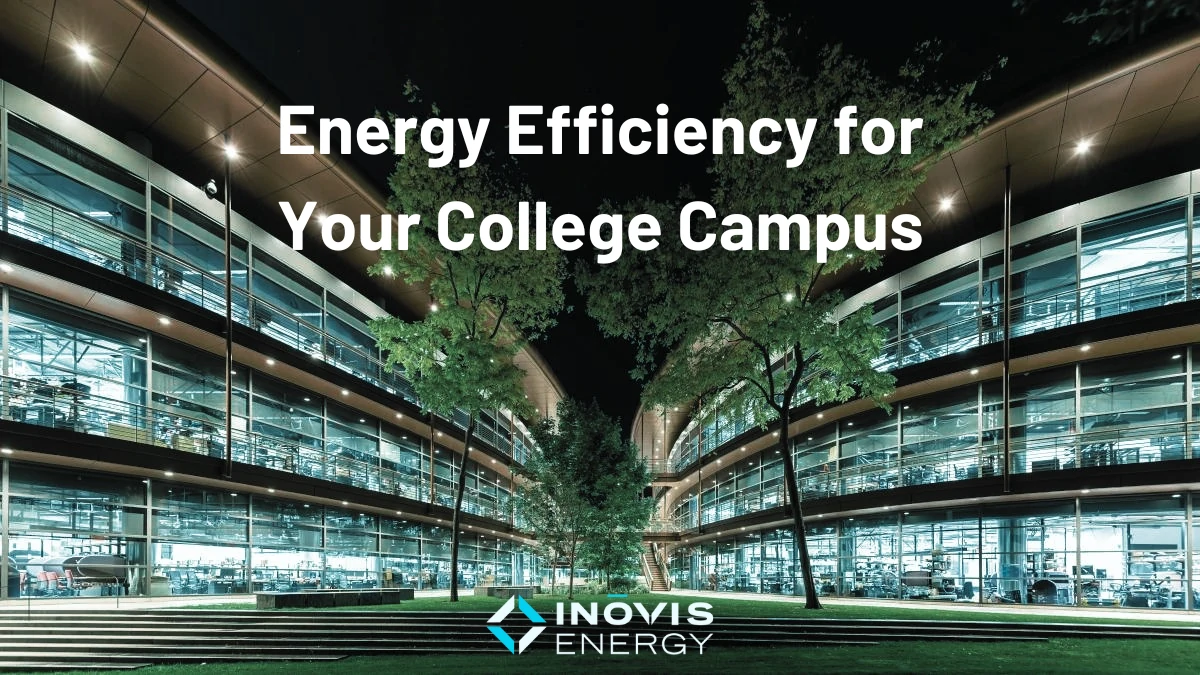With the higher costs of utilities and maintenance, as well as the increasing operational and maintenance costs of buildings, many colleges and universities are looking to improve energy efficiency on campus. The need to conserve energy is especially important for college campuses, which host a high volume of students who are also away from home for much longer periods at once. With that in mind, here are some great tips for saving energy while maintaining a beautiful college campus.
Install LED Lighting
LED lights have come a long way from the bulbs you’ll remember from the 90’s. Now, they’re brighter, more energy efficient, and more durable, with lifespans reaching up to 100,000 hours. That’s enough time for even the most diligent student to finish a four-year degree! With the added benefits of lower maintenance costs, increased safety, and the option to dim, you can save energy on campus and provide a better lighting experience all at the same time. Most college campuses use their lighting to create an atmosphere that’s conducive to focused study, while also adding in a little light to help students navigate the campus at night. With this in mind, consider replacing the campus’s existing lightbulbs with LEDs. You can save up to 80% on your energy costs while still providing the same brightness and functionality.
Related Content: Check out our work in the Education Industry
Install LED Bulbs
As mentioned above, LED lights are also available in both bulbs (or lamps as they are called in our industry) and strips. While the bulbs are a great option for general lighting and desk lamps, the strips are perfect for adding ambiance to corridors and other spaces where you’d like more consistent lighting. With the added benefit of being able to control the strips from a central hub, you can save even more energy and create the perfect campus lighting ambiance.
If you already have traditional lights installed in your buildings, you may be able to make the switch to LED by replacing the bulbs themselves. This will allow you to reduce your energy consumption while still reaping many of the same benefits as if you had installed brand new lights. Even if you’re installing brand new lights, you may want to consider using LEDs instead of other (often more expensive) alternatives. Why? Because they’re extremely energy efficient, saving around 90% in energy costs compared to standard incandescent bulbs.
Install smart controls with sensors and automation
Installing smart buildings with sensors and automation is a great way to minimize energy usage. Whether you’re heating or cooling a building, you can set up sensors to monitor the temperature, humidity, and other factors. That way, when the sensors recognize a change in the environment, they can automatically turn on or off the proper equipment to ensure the building maintains its optimal temperature. Automatic lighting is another great way to save energy on campus by reducing the amount of time you spend monitoring and adjusting light levels. By installing sensors that recognize when a space is occupied and then automatically adjusting the level of light, you can save up to 80% on energy costs and provide a better experience for those in the space by reducing glare and providing a more natural light level.
Heat and cool campus buildings properly
Many of the same sensors and automation techniques described above are also effective at heating and cooling campuses. By installing sensors in the HVAC system, you can ensure the temperature is always optimal for those in the space, while still minimizing the amount of energy used. To make sure you’re cooling the buildings when necessary and heating them when necessary, you can also take advantage of weather data to pre-schedule your HVAC system to adjust its performance levels. This means that when it’s predicted to be a particularly hot or cold day, your campus’s HVAC system will already be prepped to react and keep everyone comfortable.
Conserve water on campus
While this may seem like a no-brainer, the best way to conserve water on campus is to install water-efficient fixtures and filters wherever possible. You may want to install water-efficient fixtures in your bathrooms, including toilets and faucets. You can also add water filters to your campus’s drinking water to help reduce contaminants and improve the taste of the water. By doing these two things, you can reduce water consumption and save money on utility bills. Another great way to conserve water on campus is to install a rainwater harvesting system. This will allow you to collect rainwater from the roofs of your buildings and store it in a nearby tank. You can then use that water for a variety of purposes, such as watering the campus grounds and flushing toilets.
Find smart ways to transport students and faculty
If you have a shuttle service on campus, you may want to consider investing in autonomous shuttles. These shuttles are capable of driving themselves, which will reduce the amount of fuel and maintenance costs you incur from the shuttles you currently use. For the shuttle drivers themselves, consider investing in headsets that let drivers communicate with passengers without disrupting the other people around them. This will let drivers focus on the road while still communicating with passengers who have questions or need assistance.
Help your buildings run smarter together
If you’ve been following these tips, you’ve already started to make your campus more efficient. But what if you want to take things to the next level? What if you want to create an entire campus that runs smarter? You can do that by implementing an EMS System. With an IoT solution, you’ll be able to link your buildings and systems together, creating a web of interoperability that lets everything talk to each other. That way, you can remotely monitor your buildings and systems, which will allow you to react to issues before they become a problem. You can even add artificial intelligence to your system, allowing it to learn from past patterns and make better suggestions for optimizing energy usage and more.
Related Content: What is an energy management system?
Conclusion
If you want to save energy on campus, you need to start at the source: your buildings. Luckily, there are plenty of things you can do to make your buildings more efficient, ranging from installing LEDs to installing sensors and automation. Once you’ve made your buildings more efficient, you can then focus on connecting them together to create an entire campus that runs smarter. Get started today with a zero-cost energy audit of your campus.




